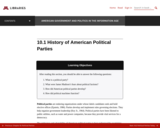
This chapter of a textbook explains political parties and their origins.
- Subject:
- History
- Material Type:
- Reading
- Textbook
- Provider:
- University of Minnesota Libraries
- Author:
- University of Minnesota
- Date Added:
- 06/02/2022

This chapter of a textbook explains political parties and their origins.
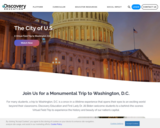
For many students, a trip to Washington, D.C. is a once-in-a-lifetime experience that opens their eyes to an exciting world beyond their classrooms. Discovery Education and First Lady Dr. Jill Biden welcome students to a behind-the-scenes Virtual Field Trip to experience the history and beauty of our nation’s capital.
Designed for students in grades 4-8, this action-packed tour features remarkable special guests and give viewers an inside look at six landmark locations:
The White House
The U.S. Capitol Building
The Supreme Court
The Martin Luther King, Jr. Memorial
Arlington National Cemetery and the Tomb of the Unknown Soldier
The Smithsonian National Air and Space Museum
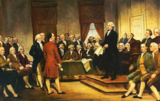
This activity is designed to help students understand the debates at the Constitutional Convention in 1787 that shaped America’s legislative branch of government. The primary goal of this activity is for students to discover how a compromise balanced the needs of large states and small states and how this led to the creation of the current House of Representatives and Senate.

In this lesson, students will explore the biography of Mary McLeod Bethune and primary resources related to her life in order to understand the impact she had on other people, and how her example of integrity and principle can affect their own lives today.
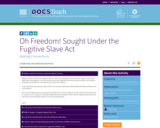
The road to Emancipation was indeed stony! Enslaved people struggled to free themselves and loved ones, one person at a time.
This activity includes primary sources from the official records of the U.S. District Court at Boston that tell the story of William and Ellen Craft, a young couple from Macon, GA, who escaped to freedom in Boston in 1848. The two traveled together, Ellen as a White gentleman (she was the daughter of an African-American woman and a White master and passed as White), and William as her slave valet. They made their way to Boston, and lived in the home of Lewis Hayden, a former fugitive and abolition activist.
With the passing of the Fugitive Slave Act in September, 1850, the Crafts' respective owners employed the legal system to regain their escaped property. A U.S. Marshal was sent to the home of Lewis Hayden. Hayden refused to let the marshal in and threatened to ignite kegs of gunpowder; the Marshal left. Ellen and William fled to Britain, where they remained for 20 years. They eventually returned to the United States and settled back in Georgia.
In this activity, students will examine historic documents about these fugitives from slavery. Then, using the documents, they will construct historical narratives to tell their story. They can explore perspective and use standard elements of writing (plot, character, setting, conflict, impact). Thinking about essential questions/topics, they will begin their writing with a topic/opening sentence that sets out the main idea.
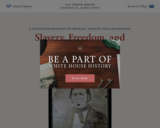
Although many people think of the White House as a symbol of democracy, it is also a part of our country’s history of slavery. From the start of White House construction in 1792 until emancipation took effect in Washington, D.C. in 1862, enslaved men, women, and children labored at the Executive Mansion. The stories of these individuals, working under the oppressive institution of slavery in the “People’s House,” demonstrate a stark contrast to the ideals of freedom and democracy that the White House has long represented.
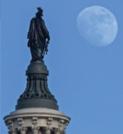
Atop the Dome of the U.S. Capitol stands a statue more than 19 feet tall, cast in bronze. Her name is Freedom. American artist Thomas Crawford sculpted Freedom from plaster at his studio in Rome, Italy. Crawford created three designs. The statue was shipped across the ocean in five pieces and assembled by an Italian craftsman for temporary display on the Capitol grounds. Then the pieces were to be taken apart and cast into bronze.The U.S. government hired Clark Mills, who owned a foundry in Washington, D.C., to make the bronze castings. A foundry is a factory where metal is melted for casting. However, the artist who assembled Freedom covered the seams between the five pieces in plaster, hiding them from view. He refused to take his work apart unless he received a pay raise. Only one man knew what to do. His name was Philip Reid.

The first ten amendments to the U.S. Constitution are known as our Bill of Rights, which serve as a guarantee for our freedoms. But these amendments almost didn’t happen. Join a group of middle schoolers on a tour of Washington, D.C. as they learn about the Constitution and what it means to be “We the People.” The “We the People” videos are produced in collaboration with the U.S. Capitol Historical Society.